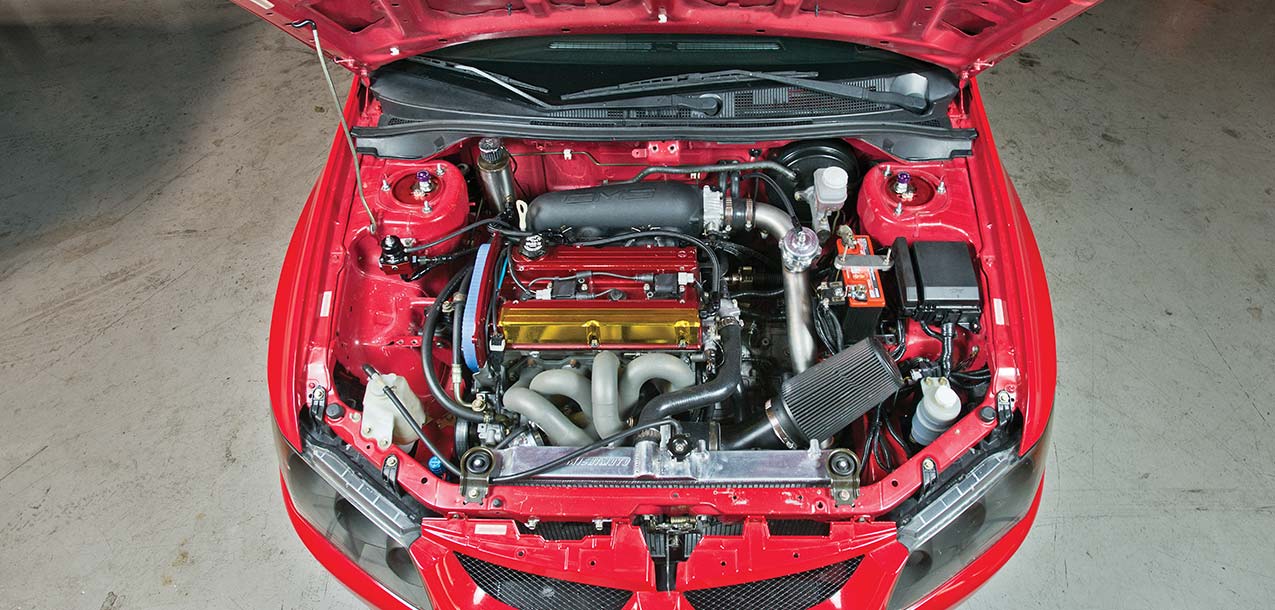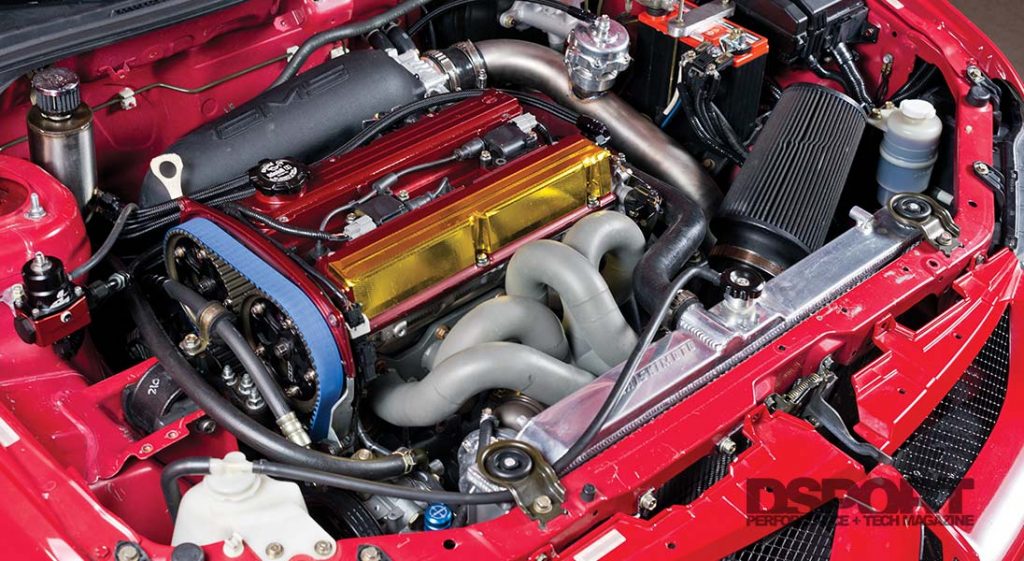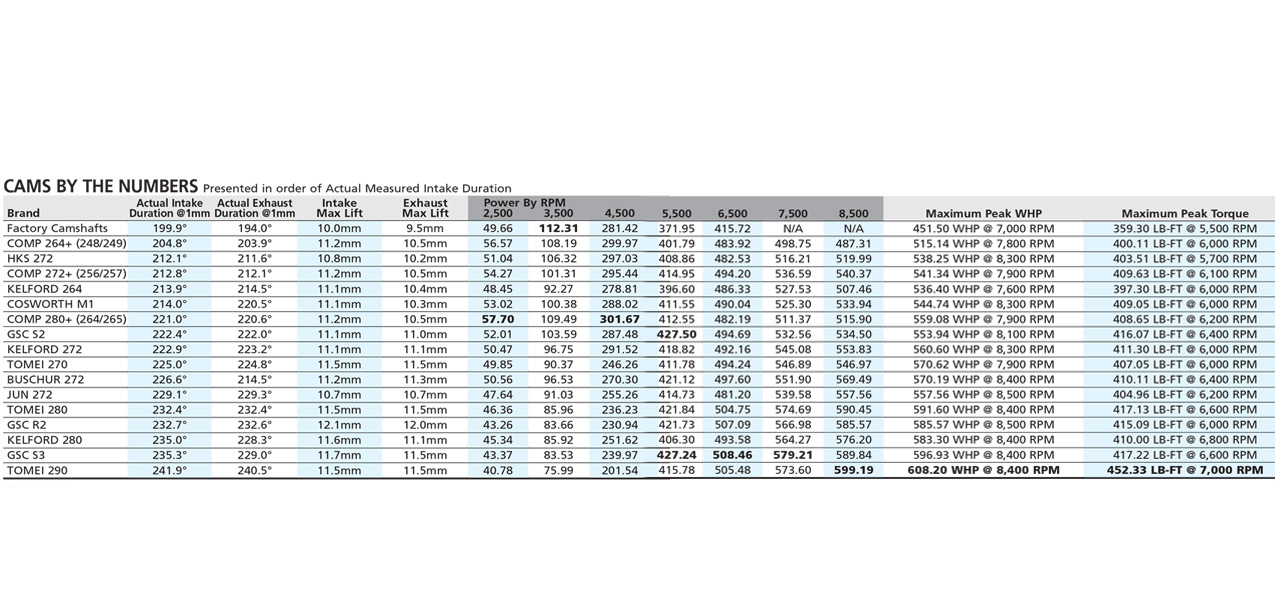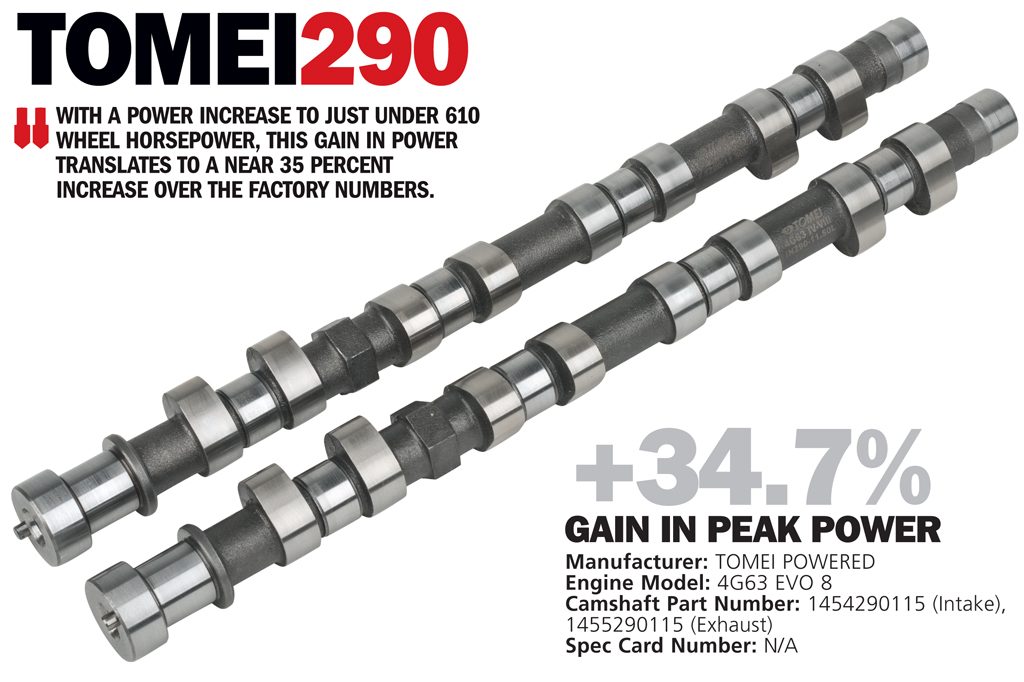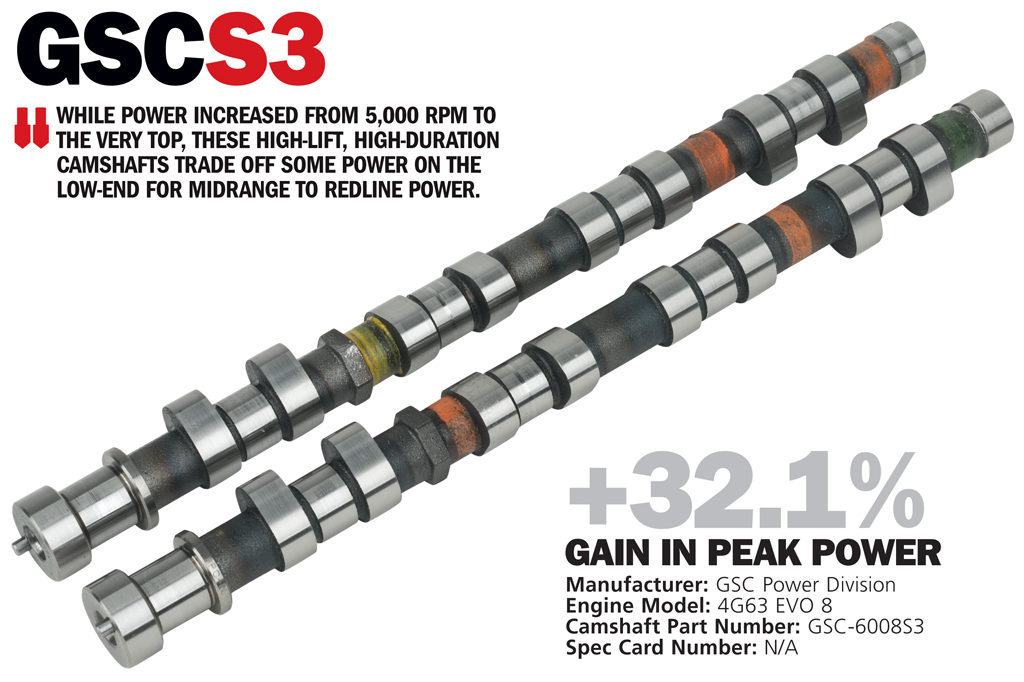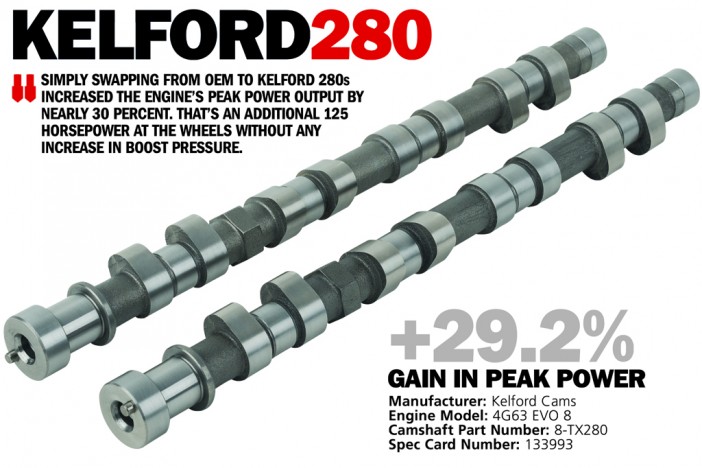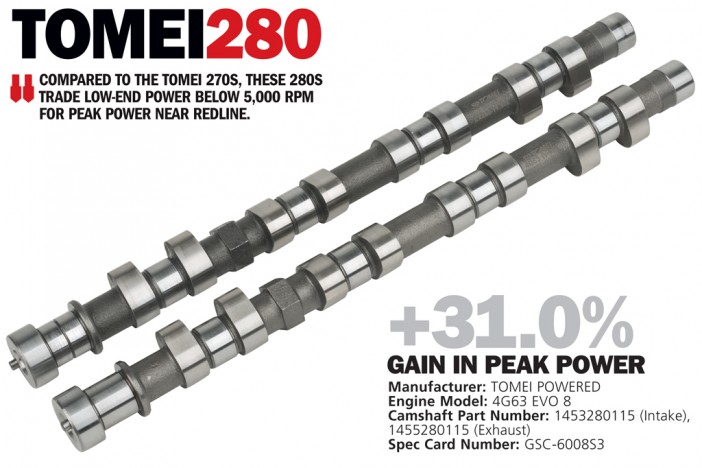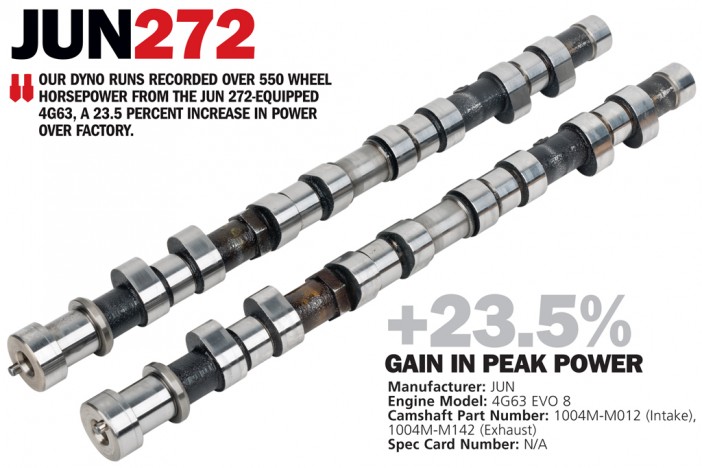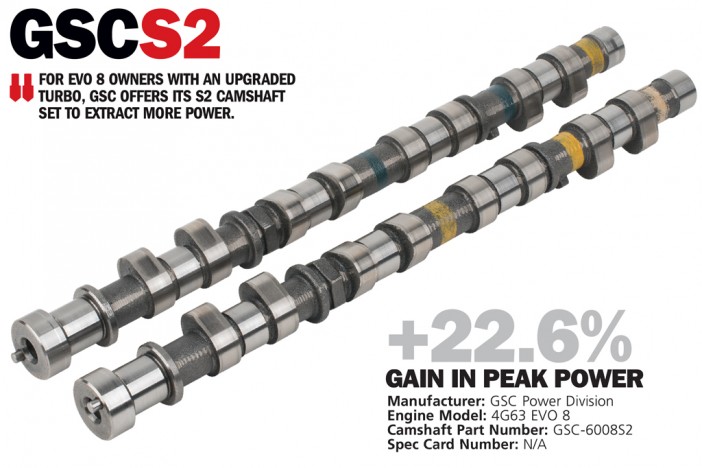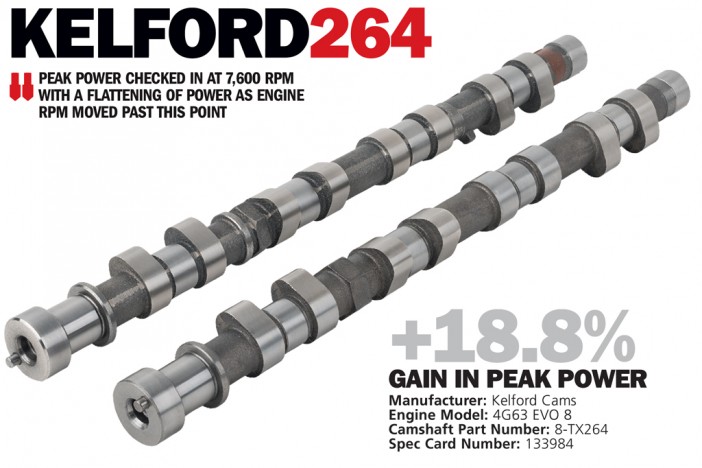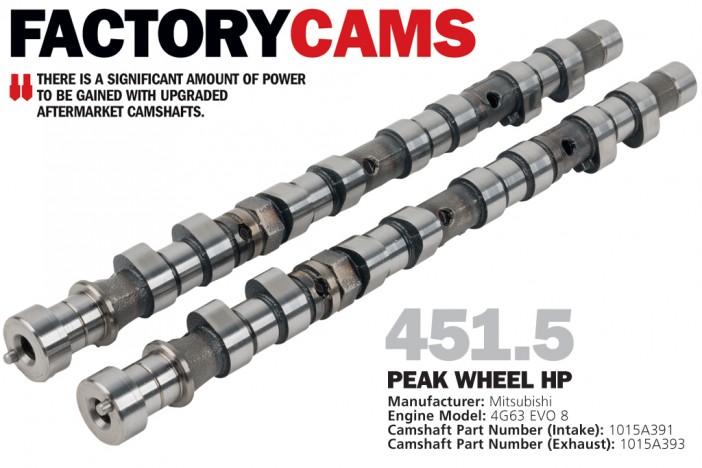THE NUMBERS GAME
When we arrange all of the tested camshafts by the actual measured intake duration at 1mm, an interesting trend is revealed. The trend is that every manufacturer has a different method of computing its”advertised” duration of the camshaft. As a result, not all camshafts advertised as “264” camshafts have the same amount of actual duration. In fact, one company’s “264” camshaft may have more duration than another company’s “272” camshaft. This is the case with the Kelford 264 that actually features more duration than either the HKS 272 or Comp Cams 272+. The opposite is found with the Comp Cams 280+. This cam has less actual intake duration at 1mm than the all of the competitor’s “272” camshafts. This isn’t to say that there is anything wrong with the Comp Cam 280+ camshaft. It’s simply a bit milder cam than its name suggests. In fact, it outperformed all other camshafts at 4,500 RPM. The Comp Cam 280+ simply has a bigger difference between its advertised and actual duration when compared to the other cams. This is one challenge that’s encountered when camshafts from different manufacturers are compared. To avoid this situation, one should only compare camshafts using duration figures set at a specific lift (1mm or 0.050″). In this way, you are comparing apples to apples. Hence this is why the following results have been arranged in such an order. The cams near the top of the list feature the least amount of duration, making them “milder” in nature. The cams art the botomof the list feature the most duration, making them the “widlest.”
MILD TO WILD
When classifying cams from “mild” to “wild,” organizing the camshafts by intake duration is one method that can be used. While not fool proof, this method establishes a way of ranking the camshafts by a common specification. Camshafts that are “mild” will generally produce more intake manifold vacuum (important for power brake assist) and have a smoother idle characteristic. These camshafts will tend to deliver respectable power gains without pushing the peak power and peak torque RPM much more than 500 RPM about the factory level. “Wild” camshafts, on the other hand, will feature more actual duration and even more additional lift than “mild” camshafts. The results are low intake manifold vacuum, and a “choppy”, “lopey” or “racey” idle. These wild cams will often require an increase of the idle speed by 500RPM of more in order to keep the engine from stalling. These wild cams also require additional tuning at these low engine speeds and are therefore best teamed with a capable aftermarket engine management system.
TUNING TIP: If you choose an aftermarket camshaft that doesn’t deliver to your expectations, working with the camshaft manufacturer (by providing a dyno of the power curve with the factory cam and the aftermarket cam, along with other engine/vehicle specs) can be very productive in many cases. Armed with this information, most manufacturers will be able to suggest a grind that gets you right where you want to be. You may also be able to use the real specifications measured by DSPORT to ensure that Brand A’s “272” camshaft really is more aggressive than Brand B’s “264” camshaft when switching from one manufacturer to another.
THE GENERAL TRENDS
As camshafts move from mild to wild, peak power production tends to go up. While the factory camshaft produces the best power at 3,500 RPM (probably very close to the cruising RPM for the vehicle), all of the aftermarket camshafts provide significant power gains at higher engine speeds. Milder cams outperform the wilder cams at 4,500 RPM. At 5,500-6,500 RPM, all of the aftermarket cams are within 25 horsepower of each other. However, as engine speeds approach the higher revs, the wilder cams begin to gain a power advantage. From 7,500-8,500 RPM, some of the mild cams are nearly 80 horsepower shy of the output from some of the wild cams.
The peak power RPM also tends to rise with “wilder” cams. The lowest duration factory camshaft creates peak power at 7,000 RPM. The highest duration TOMEI 290 camshaft produces peak power at 8,400 RPM (perhaps at an even higher engine speed, but our test limited engine speed to 8,500 RPM).
CAM SELECTION
So which is the best camshaft for your performance application? It all depends on a number of factors. However, it’s safe to say that ditching the factory camshaft for a quality aftermarket camshaft will deliver a serious performance increase. The maximum safe engine speed (redline) and the intended usage will also dictate selection. Milder grinds are going to be a better choice for engines that do not have the necessary upgrades to safely increase the redline of the engine above the factory set level. The required upgrades for extended redlines often consist of spring and retainer upgrades and, in some cases, upgrades to the pistons and rods to endure the higher engine speeds. When an engine can be safely revved to 8,500 RPM, instead of just 7,500RPM, a wilder camshaft will likely be the choice for optimized performance. As for applications, road racing vehicles will generally run quicker with a grind that is milder than the camshaft that delivers peak performance on the dragstrip. The reason is simple. Road racing vehicles depend on that mid-range punch coming out of turns. Hence having more power between 4,500-to-5,500 RPM will likely have more influence on lap times than having more power between 6,500-to-7,500 RPM.
CLICK THE IMAGES FOR MORE INFORMATION


